Many landlords understand the risks of renting out property to irresponsible tenants, including its destruction, which often increases maintenance costs. Some tenants do not pay their rent on time, while others are generally just difficult and do not follow the terms of the lease. In order to reduce these risks, it is important to screen tenants before allowing them to sign the lease. You can use many methods to verify your tenant’s suitability, one of the most common of these being through a rental verification form.
What is a Rent Verification Form?
A rent verification form is a document used by landlords and property managers to verify the rental history of a potential tenant.
It contains questions on the tenant’s behaviors in their past residences, such as rent payments and how they handle rental disputes. The form basically permits the landlord to perform a background check on the tenancy and employment history. It contains questions on the history, such as the dates of previous tenancies, the amount paid in rent, and the reasons for the termination of previous leases. From the information given, landlords can assess whether the tenant can pay rent on time and if they may pose any difficulties to them and other tenants on the property.
How a Verification Form Can Help You Assess Tenant Suitability
You can use the verification form to assess your tenants on different aspects of suitability. You may use predetermined criteria to decide whether the tenant is fit to rent your property.
Some of the ways of assessment include:
Standardized information
An effective form requests standard information on the tenancy history; because of this, you can be sure the information being provided is accurate.
EXAMPLE
If your form asks for information from three previous landlords, the dates of tenancy should be consistent, beginning with the most current and former landlords.
Verification of information
These forms often have a section where the potential tenant gives permission to the landlord to verify information on their rental history. This allows previous landlords to freely release information pertaining to the tenant and their previous tenancy. You can then evaluate the suitability based on the details released to you.
Assessing behavior during the tenancy
You may also ask specific questions about your potential tenant’s behaviors. They may include information on dispute resolution and adherence to the terms of the lease. Pointed questions like these can help you understand a tenant’s character better, especially if you have many tenants and have shared spaces on your property.
Identifying red flags
If you have already identified a criterion by which you will screen your tenants, these forms will be the perfect tool to help you compare tenant information against your preferences.
EXAMPLE
If a tenant has consistently paid rent late, paid fines and fees for destroying property, or provided false information, these can be identified as red flags and a sign that the tenant is not suitable.
Free Verification Forms
Given below are verification form templates:

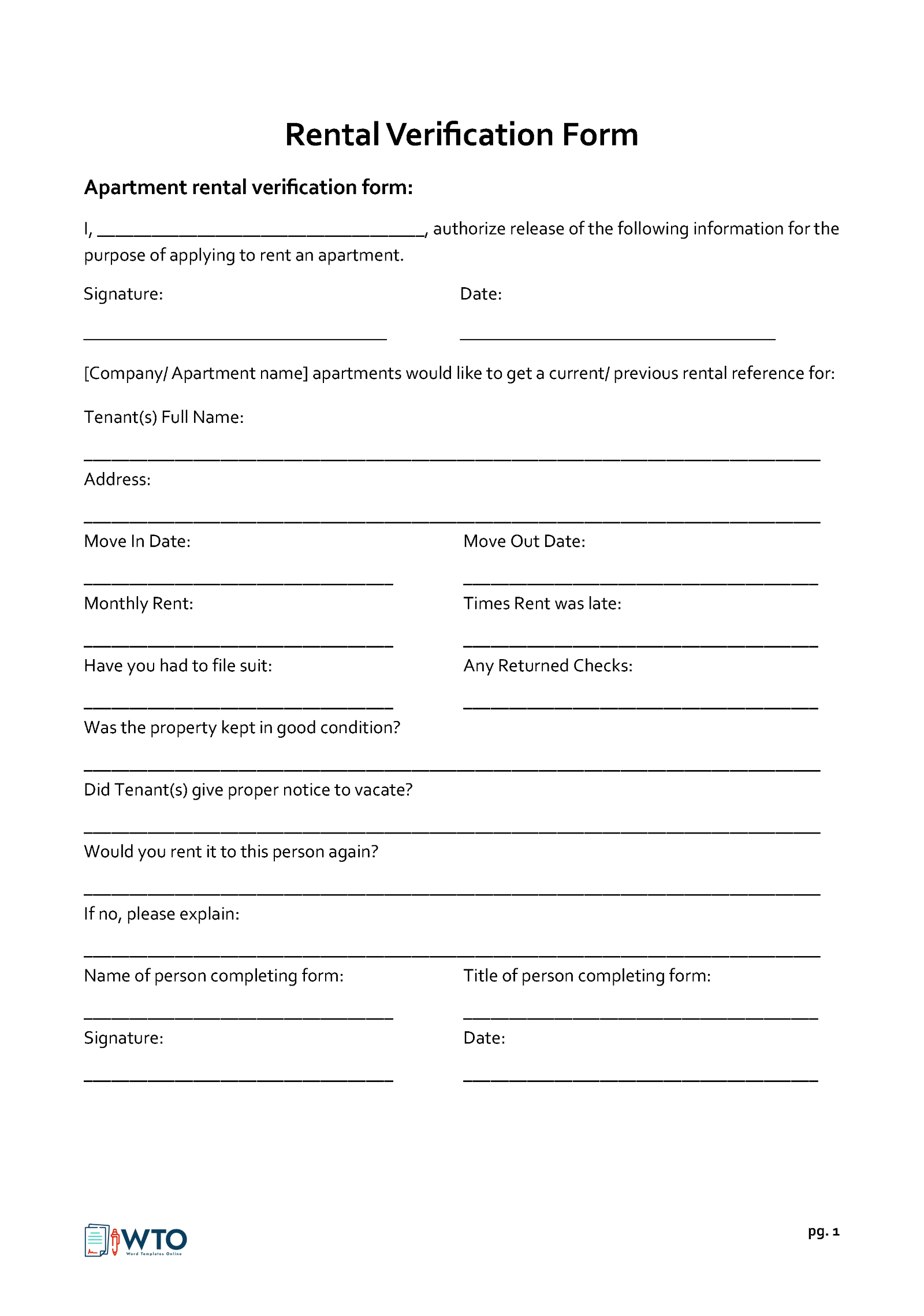
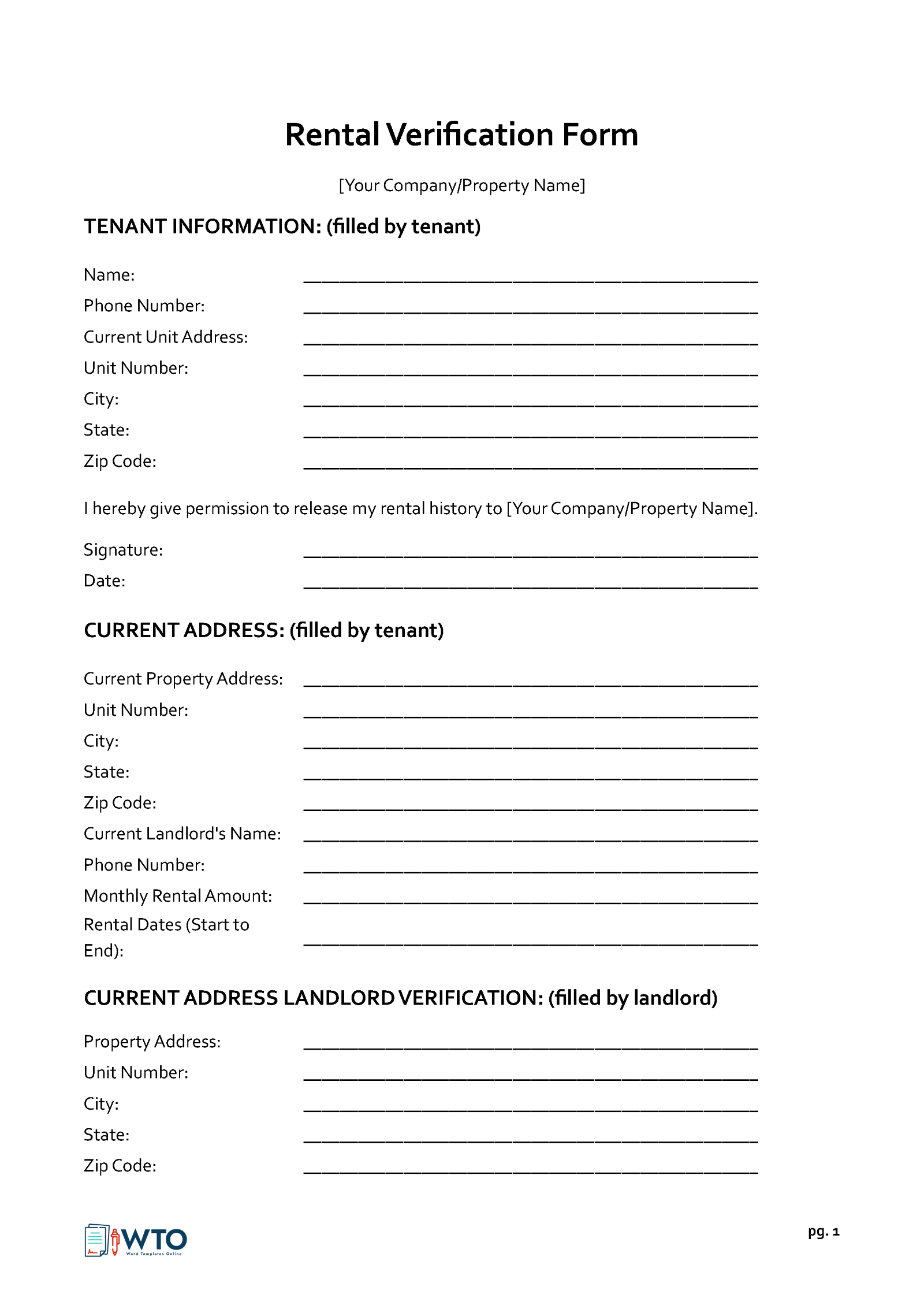
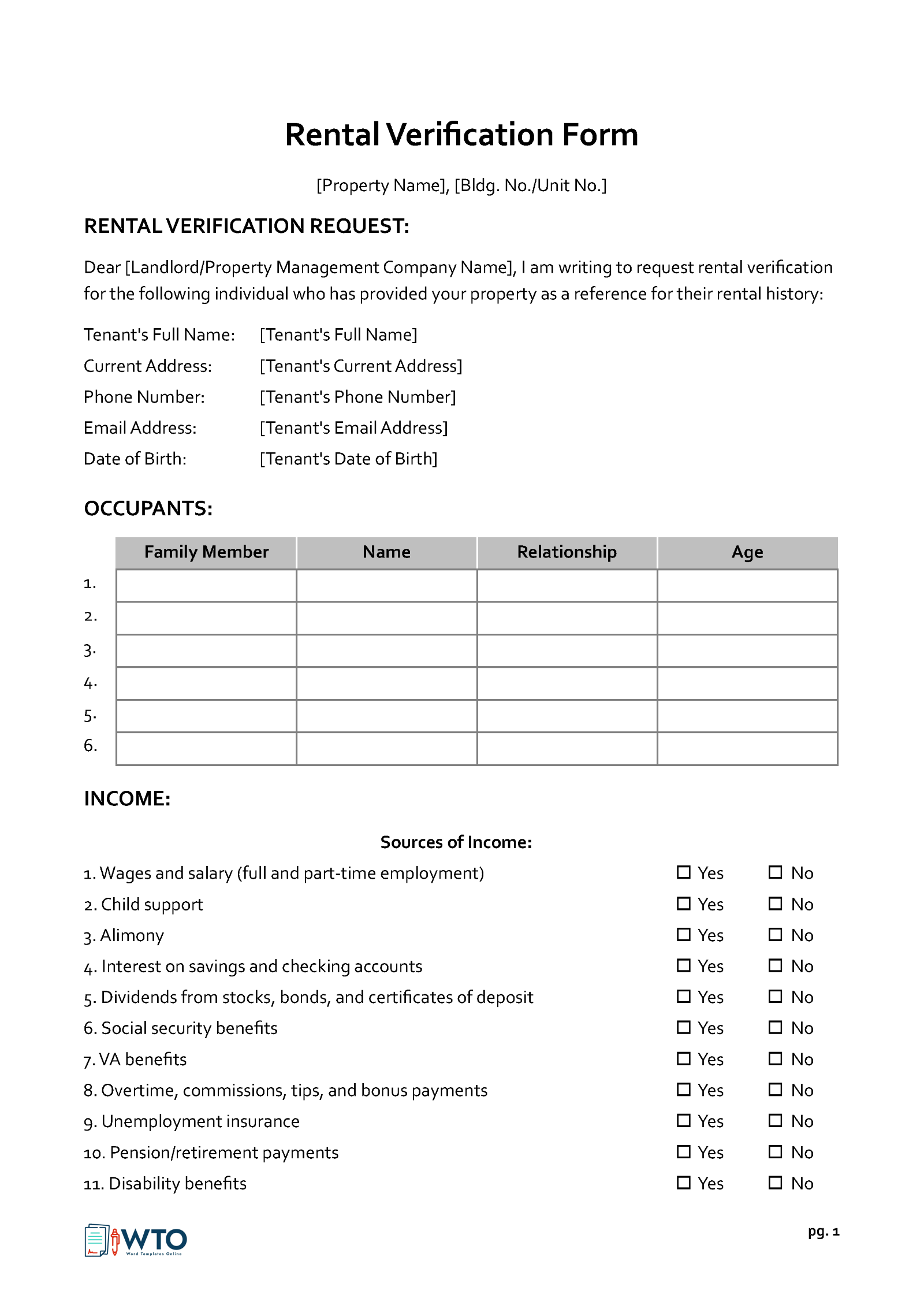
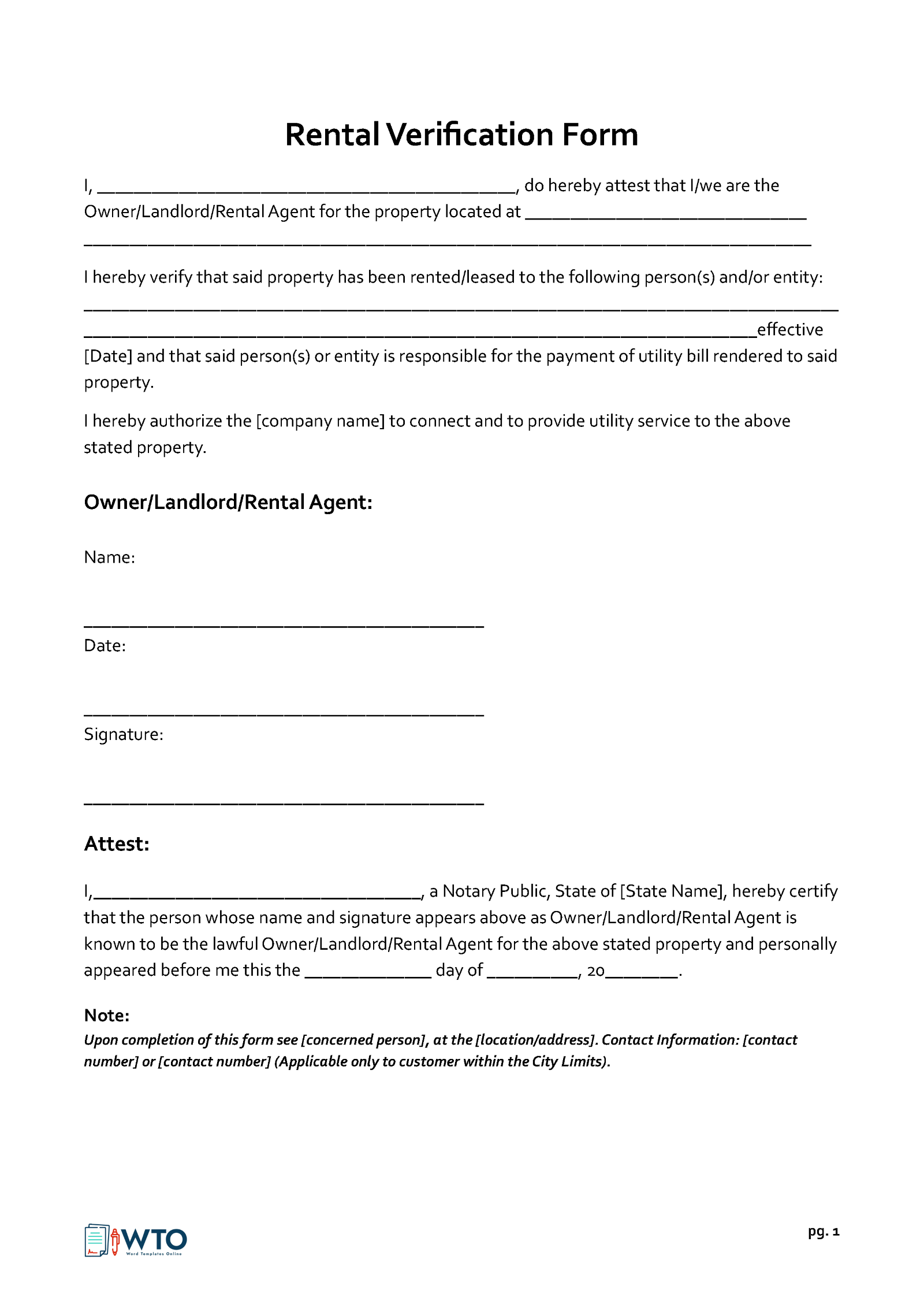
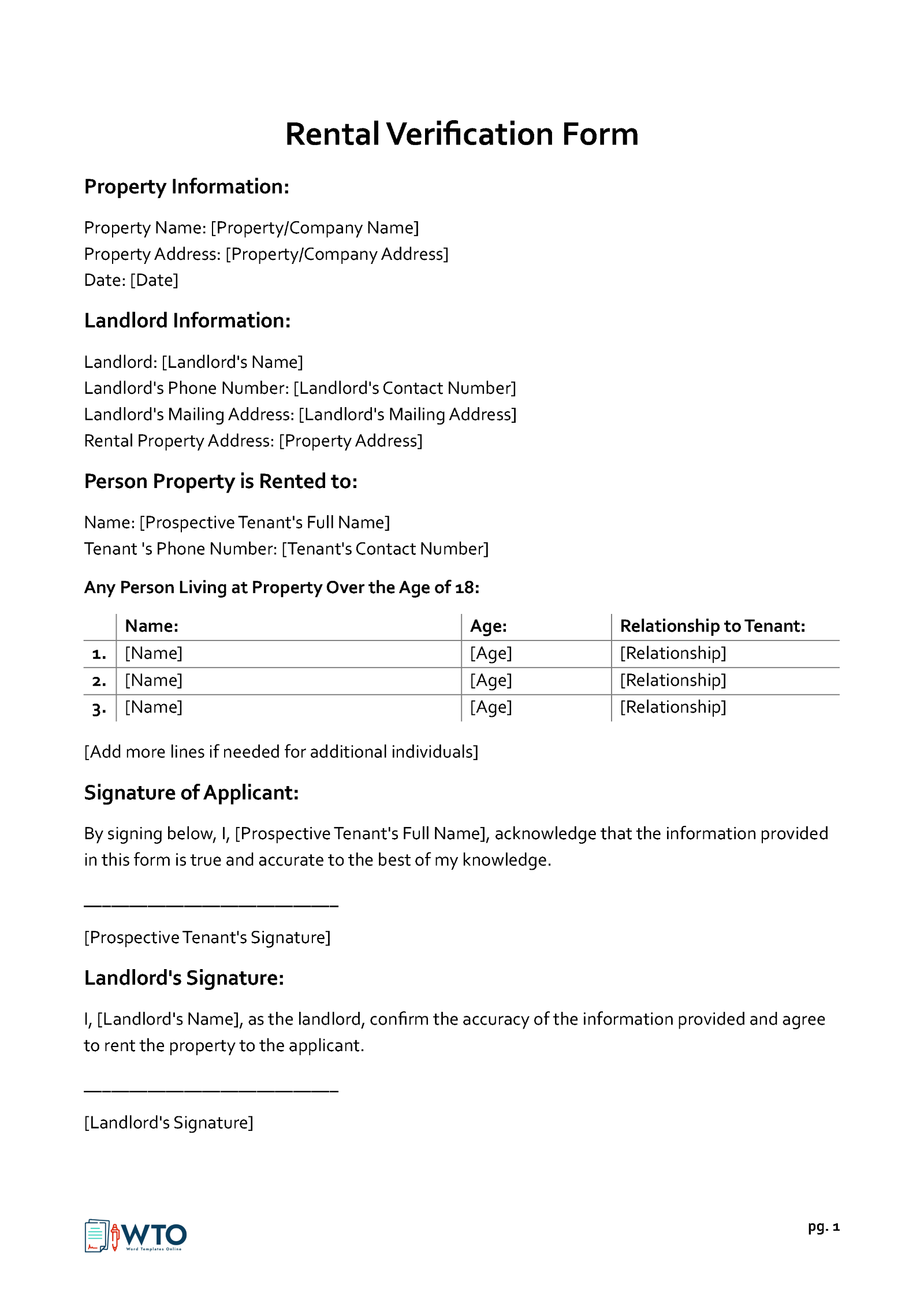
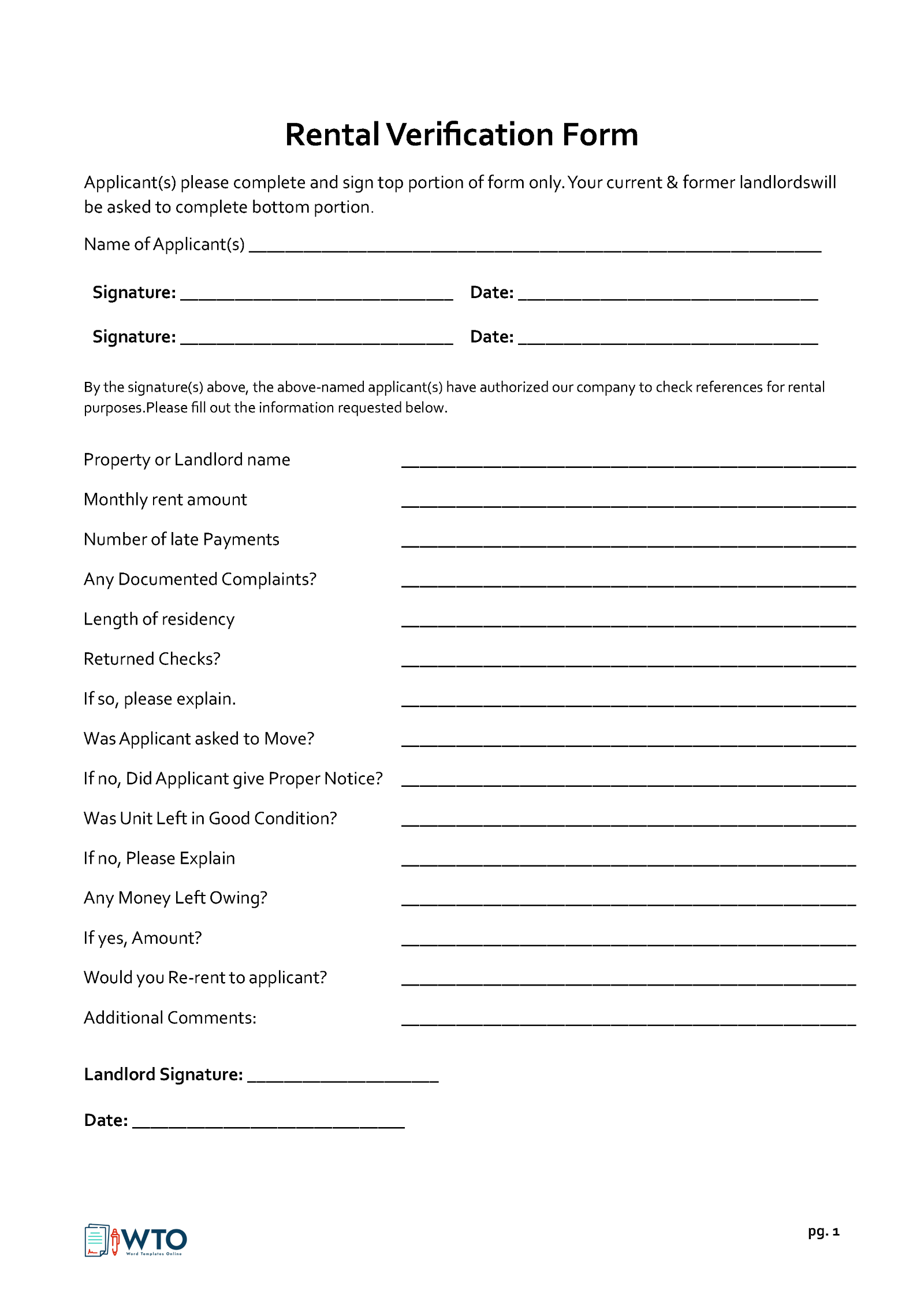
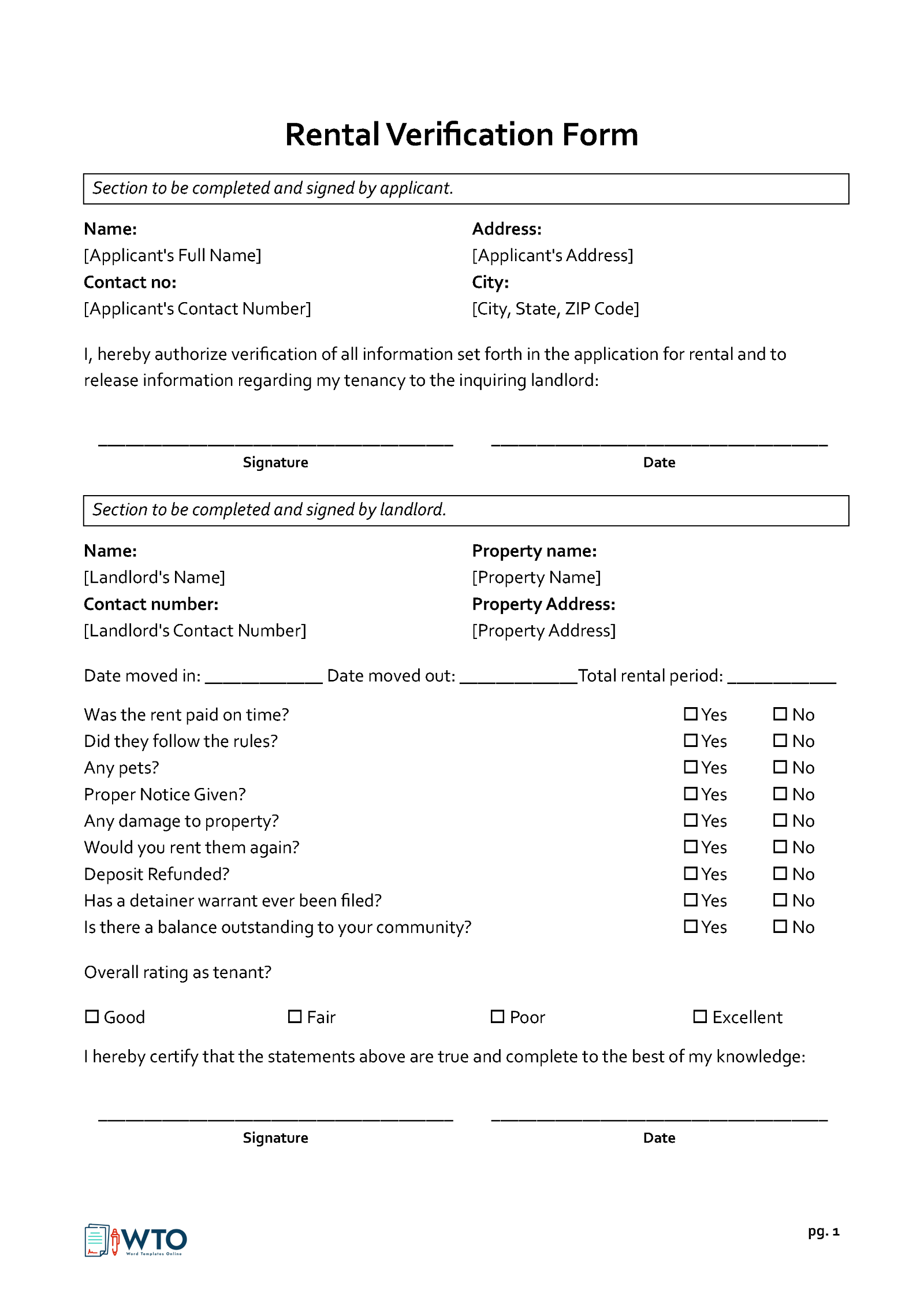
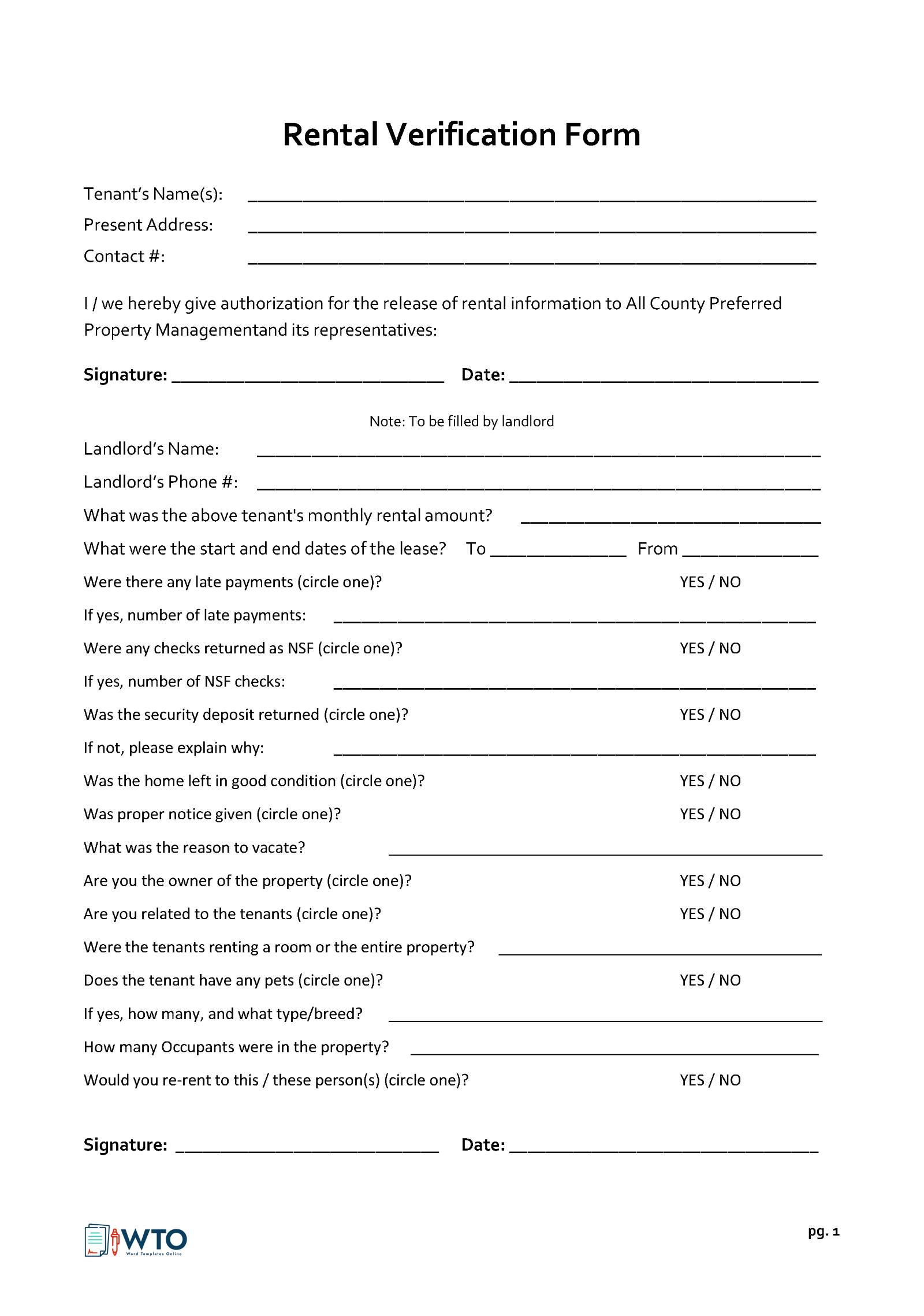
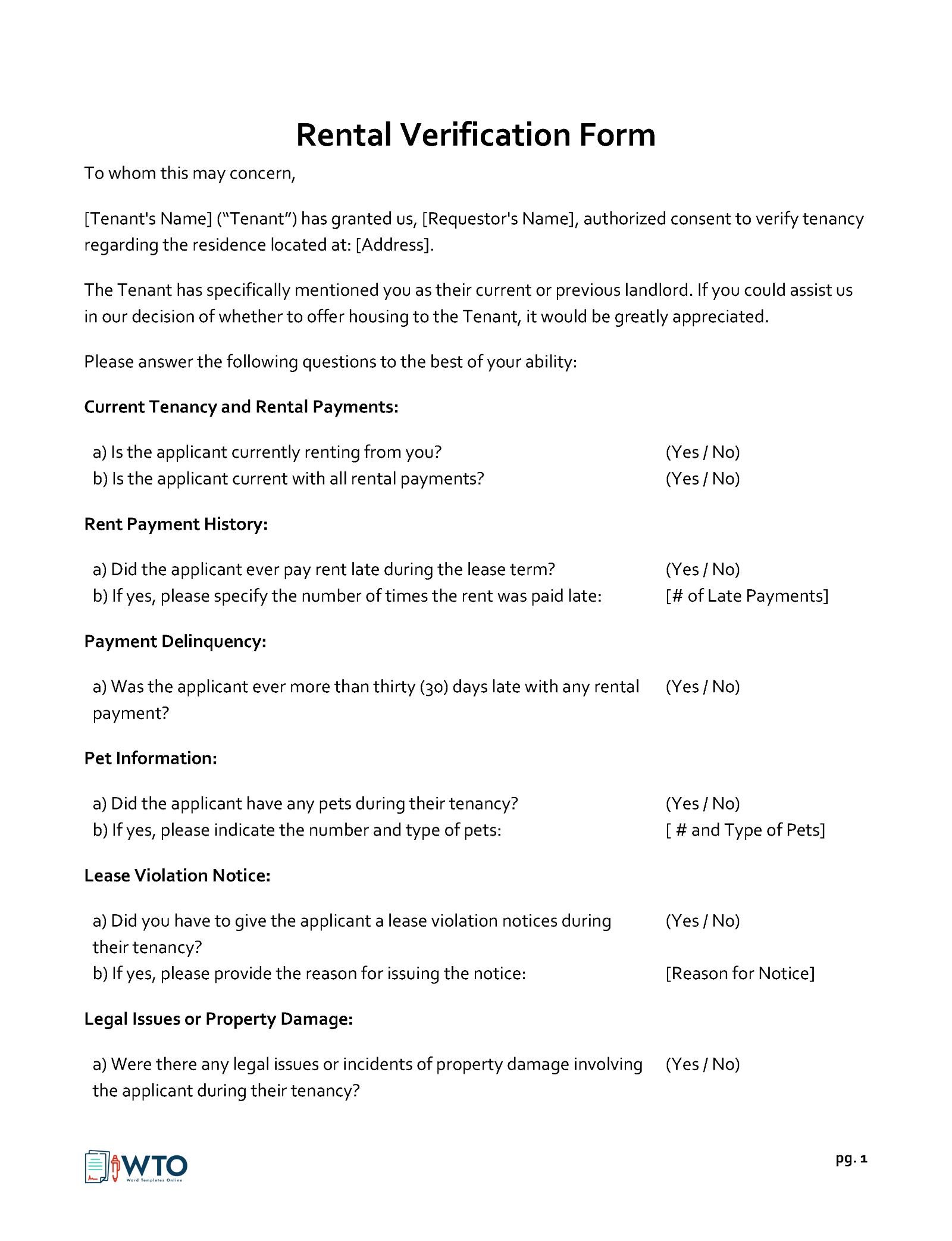
Basic Components of a Verification Form for Rent
The main purpose of your verification form is to collect information that will help you evaluate your tenant’s suitability. As such, the sections and questions incorporated in it should provide enough information to help you verify and assess your tenants.
These sections include:
Rental history
This is one of the most important sections of your form. It should include questions on the tenant’s previous residence, the duration of the tenancy, the rent paid, and the period of payment. Additionally, you should ask for the previous landlord’s number to verify whether the information provided is true to estimate the reliability of the potential tenant.
Rent payments
This section of the form is designed to request information on the tenant’s previous rent payment behaviors. In addition to the amount paid in rent, you may ask about the terms of payment, any fines imposed for late payment, and any other questions related to the payment of rent. The answers in this section will help you understand whether the potential tenant’s character is suitable before renting your property. You may also include a section for previous landlords to comment on the tenant’s rent payment behaviors.
Lease violations
In addition to payment, one of the other determinants should be the potential tenant’s adherence to lease terms. If you have special or unique features on your property, you must have this section in your verification form. The question may include whether there have been disputes over the tenancy period, what lease terms led to the disputes, and how the disputes were resolved. It should also include a section for the landlord to comment on any previous concerning behaviors like having unauthorized pets, noise violations, and other lease violations.
Property damages
In this section, you may ask for details of previous property damaged by the tenant and how much it cost to repair. If,
EXAMPLE
The tenant has a consistent history of property damage, then you may conclude they are not likely to take good care of your property. You may request details on their assessment of the tenant’s character with regard to how reliable they were in taking care of the property
From this information, you can estimate whether the tenant is a good fit and the potential liability you may have over property damage should you rent it to the tenant.
References
You may also include a section for references being former employers and landlords. It should provide their contact information to allow you to reach them and inquire about their experiences with your potential tenant. While you may want to believe all the details provided by the tenant, it is possible that they may have exaggerated or lied; using the contacts, you can seek clarification on any doubts you have.
Since you will be using the information in the form for verification, you need an authorization clause permitting you to seek clarification from third parties. It is basically a clause stating that the tenant consents to their information being released to you. This section should also include a signature and date indicating when the form was signed. With this authorization, you can confirm whether the details are accurate and up to date.
Role of NACA in the Rent Verification Process
The Neighborhood Assistance Corporation of America (NACA) is a non-profit organization with the aim of providing advocacy for affordable home ownership in both urban and rural areas. The NACA has a membership program that helps its members purchase homes through its home buying initiative.
Most people that are members of this program provide their rental history to the Corporation. As a landlord, you may be required to provide additional documentation to be allowed to verify a member’s rental history. Members also get counselling and financial assistance to purchase homes. As a result, you may be required to check your lease terms and confirm whether they align with those of the NACA.
If your potential tenant is a member, you may have to work with the Corporation and follow the processes to verify the tenant’s information. This is important as it makes the rental application process smoother while allowing the Corporation to achieve its objective of providing affordable home ownership to low and moderate-income people.
Rent Verification Form Vs. Rent Verification Letter
While both documents provide information on a tenant’s history, they vary in format and amount of information provided. A verification form for rent is prepared by landlords and property managers. It consists of specific questions about the potential tenant’s previous rental experiences. It may also request for references such as former landlords and employers to verify the information provided by the tenant.
A rent verification letter, on the other hand, is typically a letter written by a former landlord upon request by a property manager. It may be as a follow-up from the potential landlord seeking verification of the information provided by a potential tenant. They are used when screening a tenant after they have filled out the verification form. Unlike the form, these letters are less limiting. The former landlord is free to provide additional details on rental payments and tenant behavior. Further, the letter only provides information from a previous landlord, while the verification form provides information from the tenant.
Final Thoughts
The verification form should help you get quality and accurate information about your tenant. You should be able to evaluate their suitability and identify any red flags sufficiently. One of the most vital of these considerations is the rent. From the form you should be able to tell whether the tenant can afford to pay their rent and pay it on time. In addition to payment, the tenant’s previous rental behavior, such as care for the property, should be assessed. This information helps you screen tenants, especially where you have limited units and only want the best. With an effective form you can select a tenant who is reliable in terms of rent payment and general good character.












